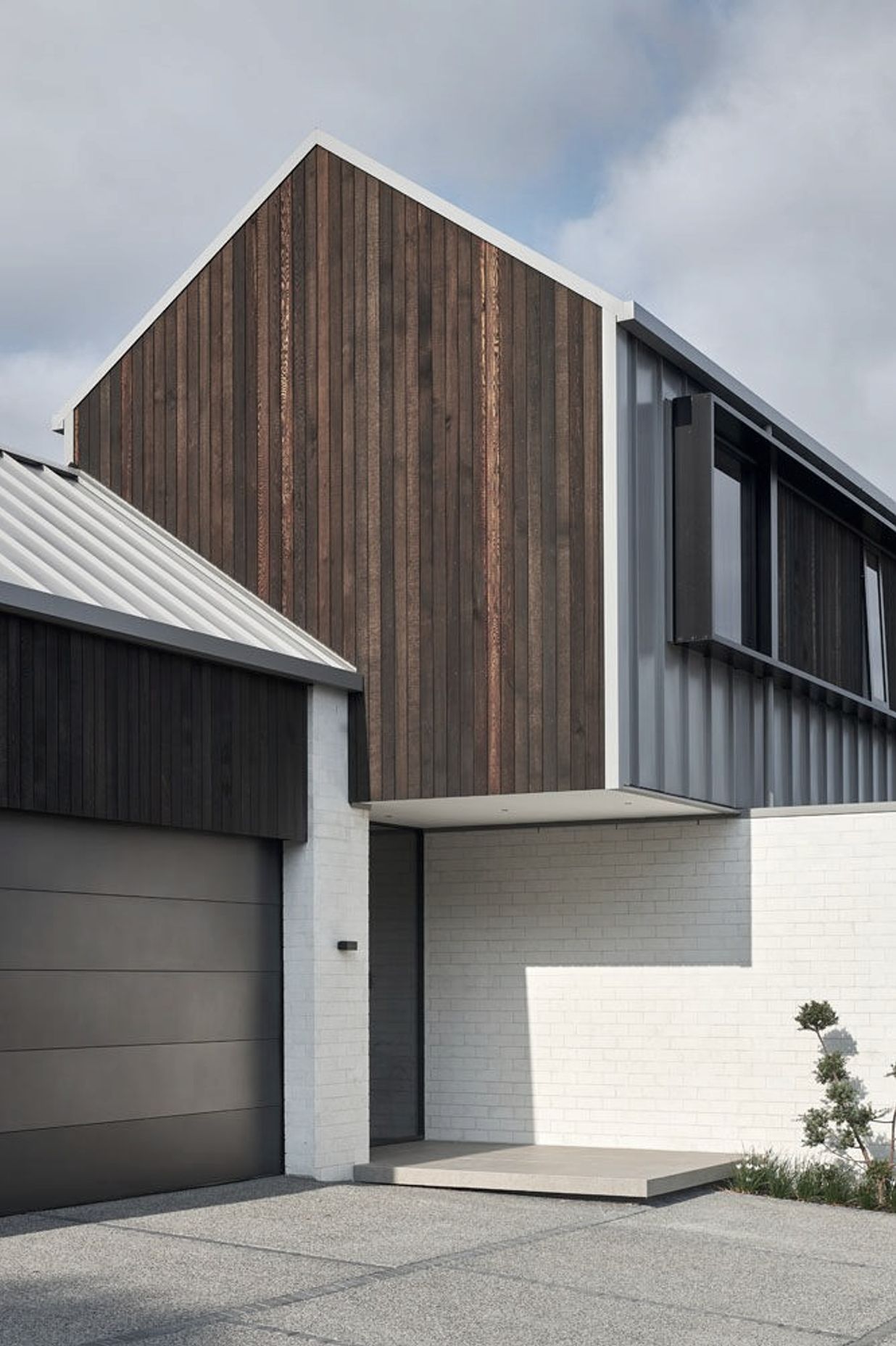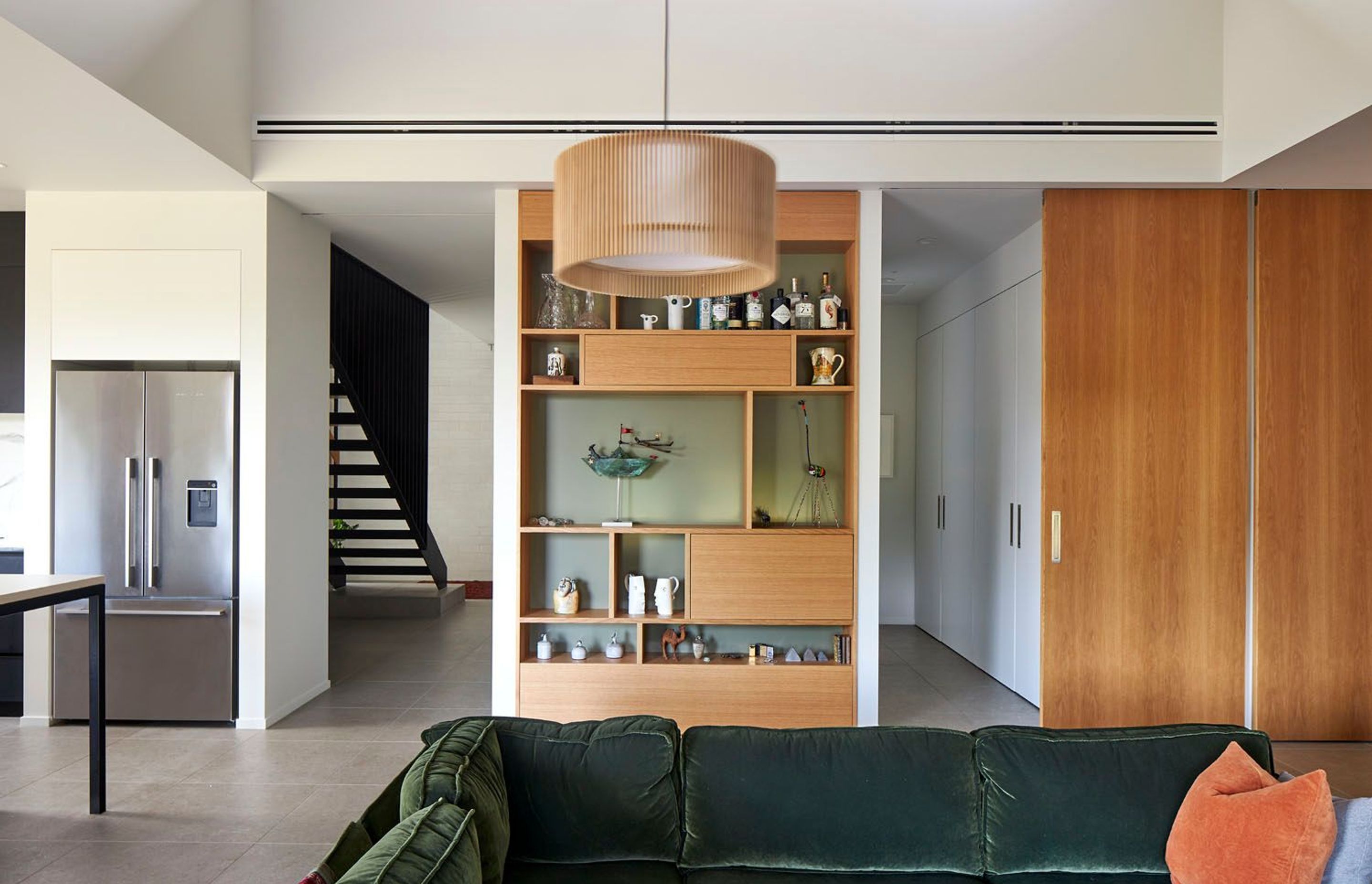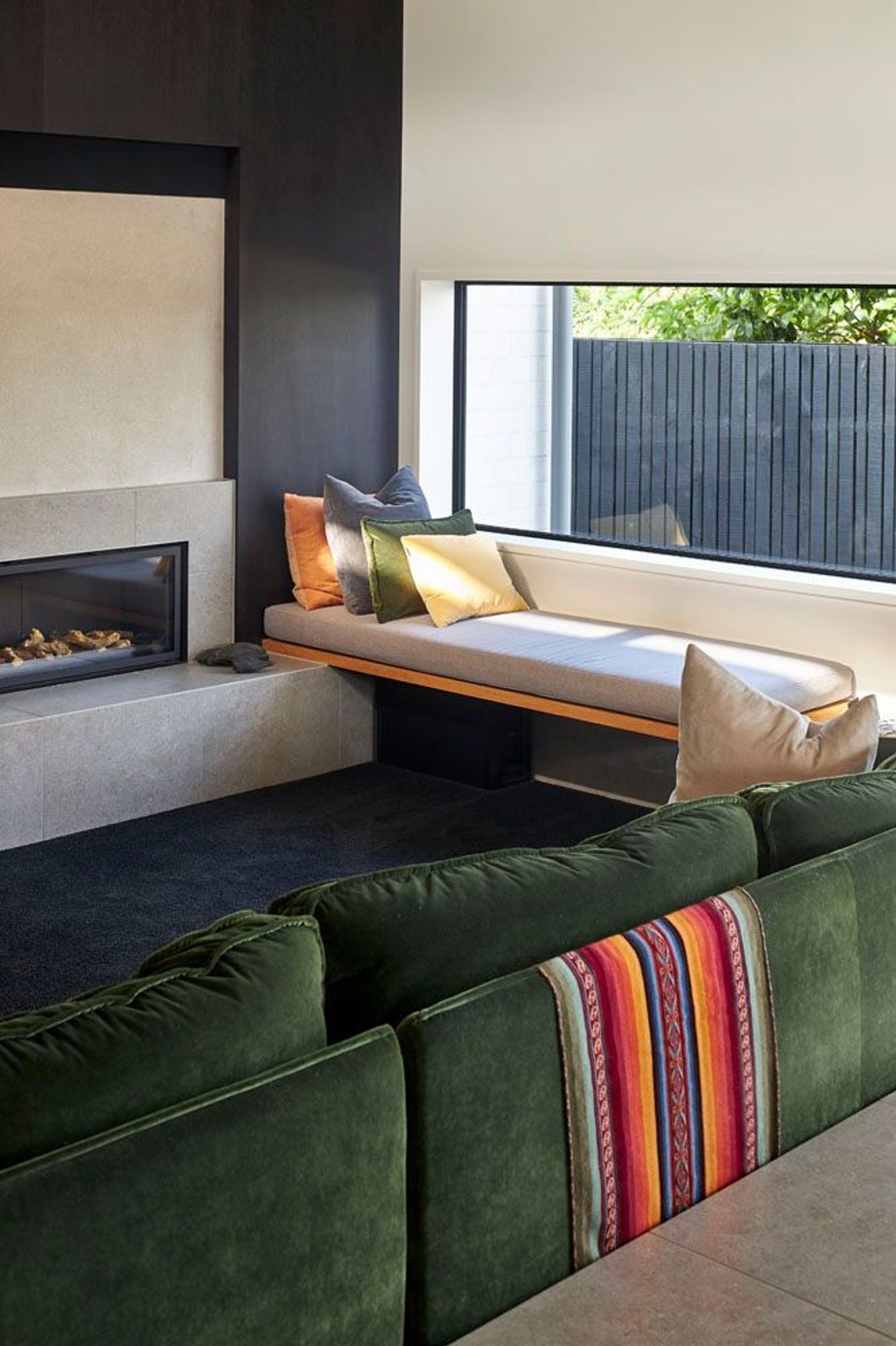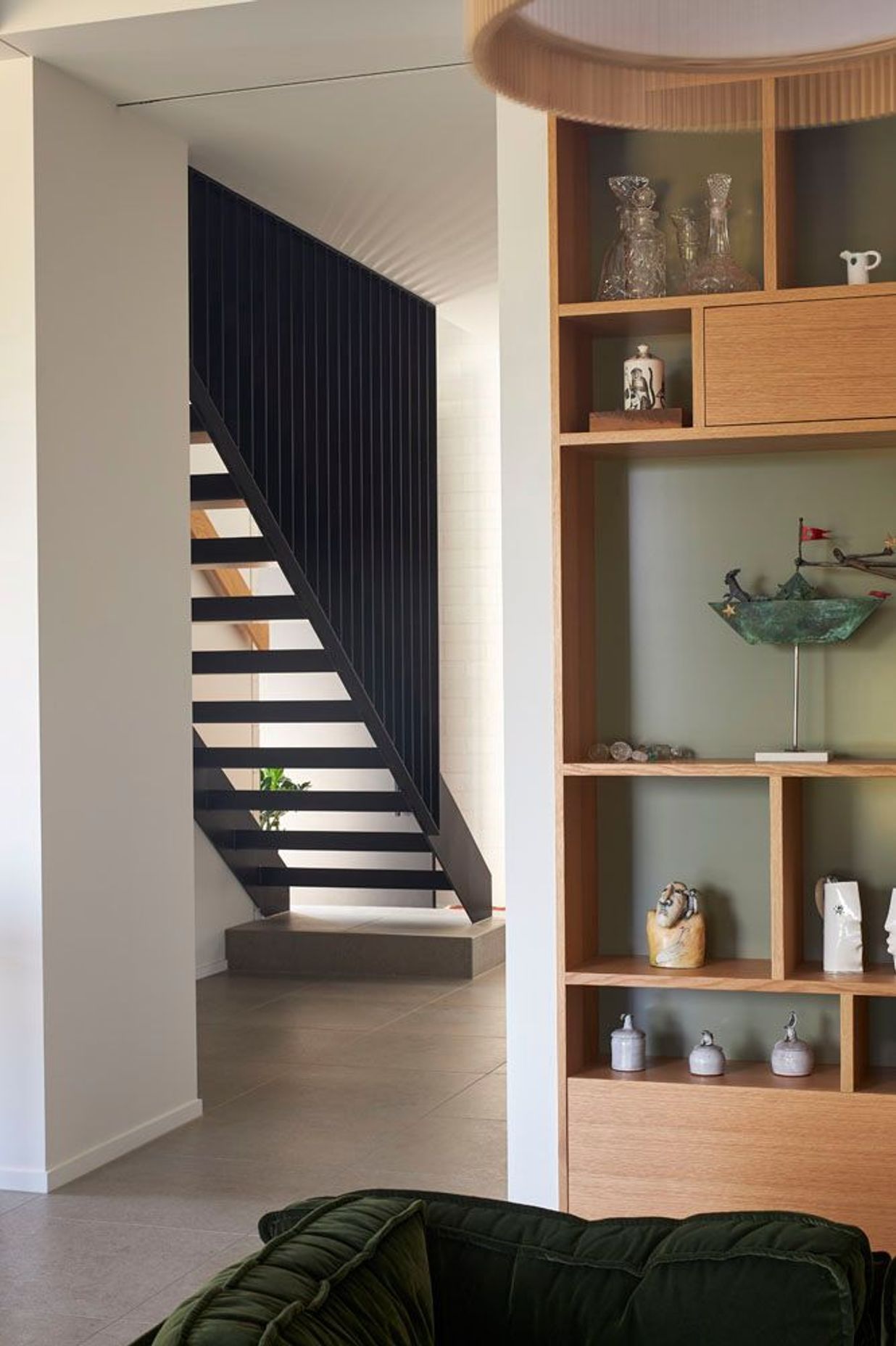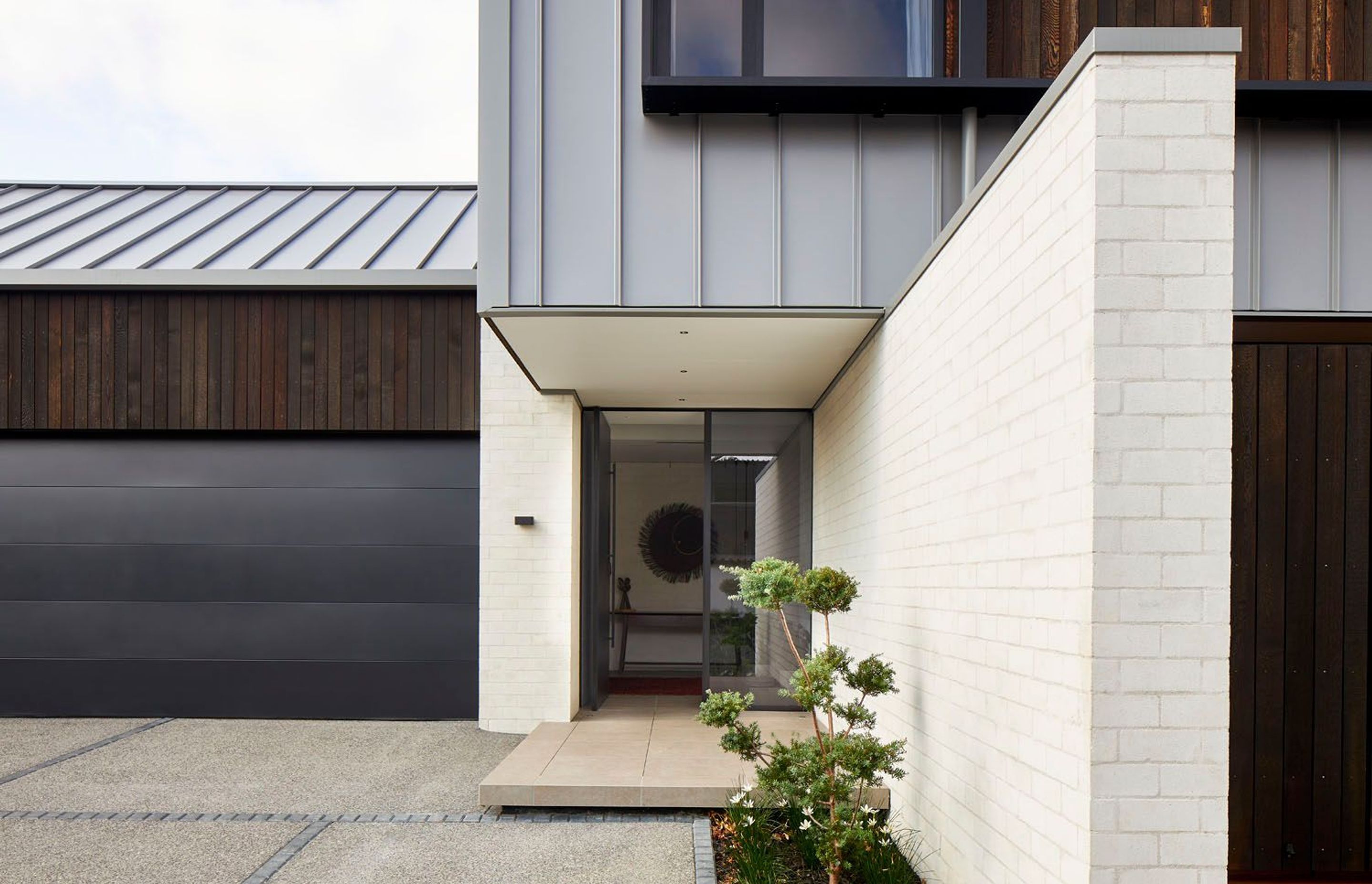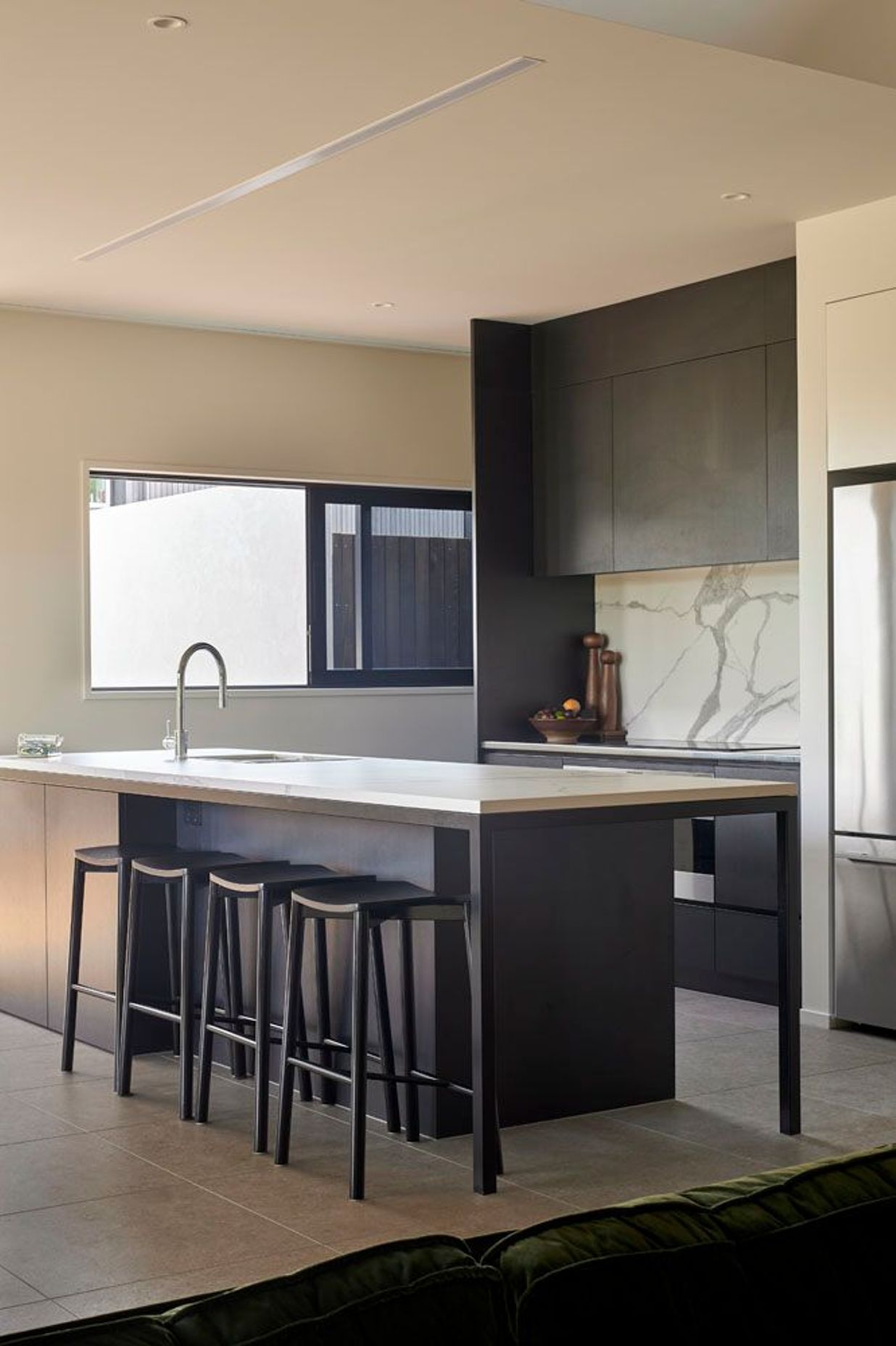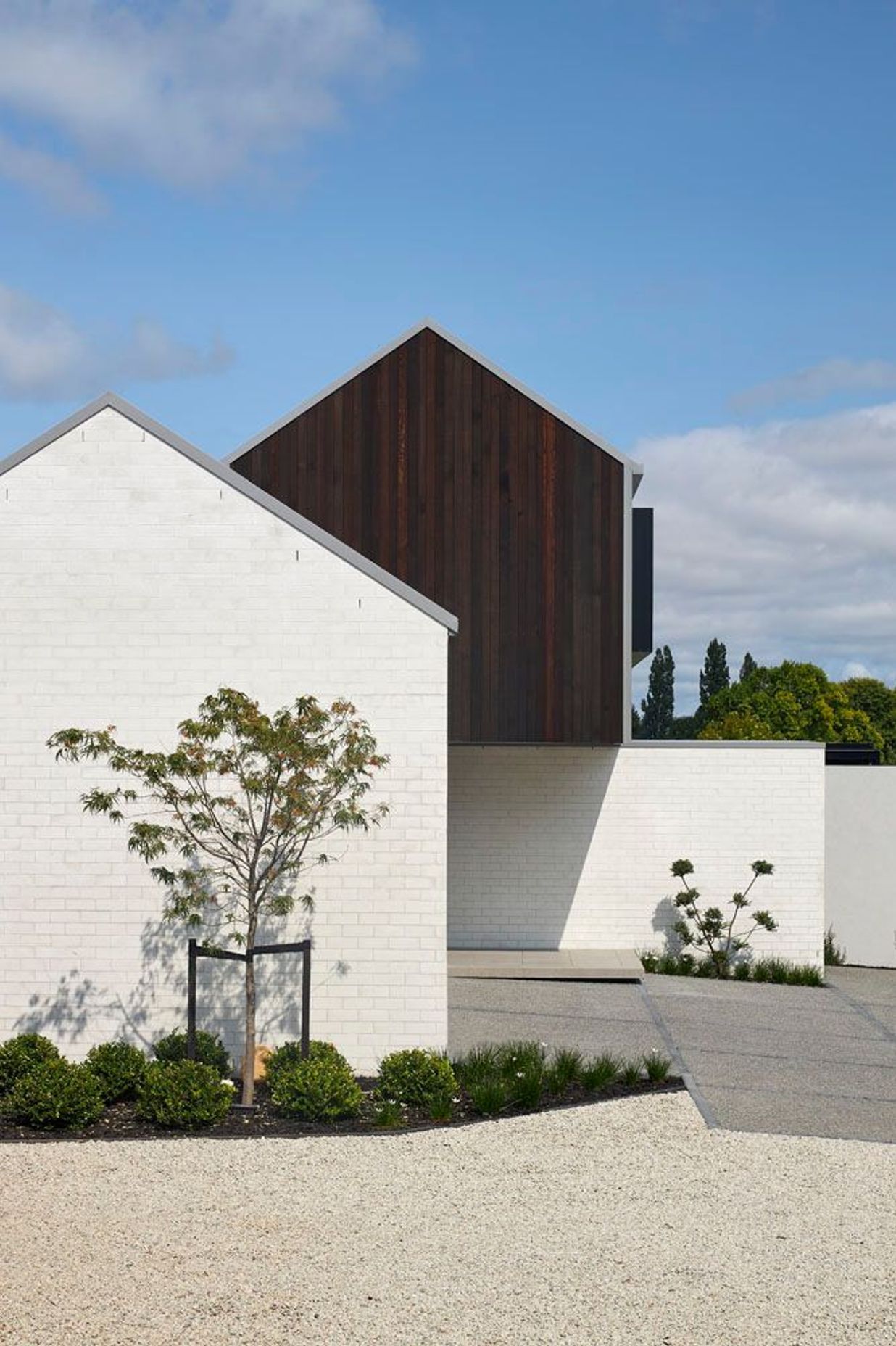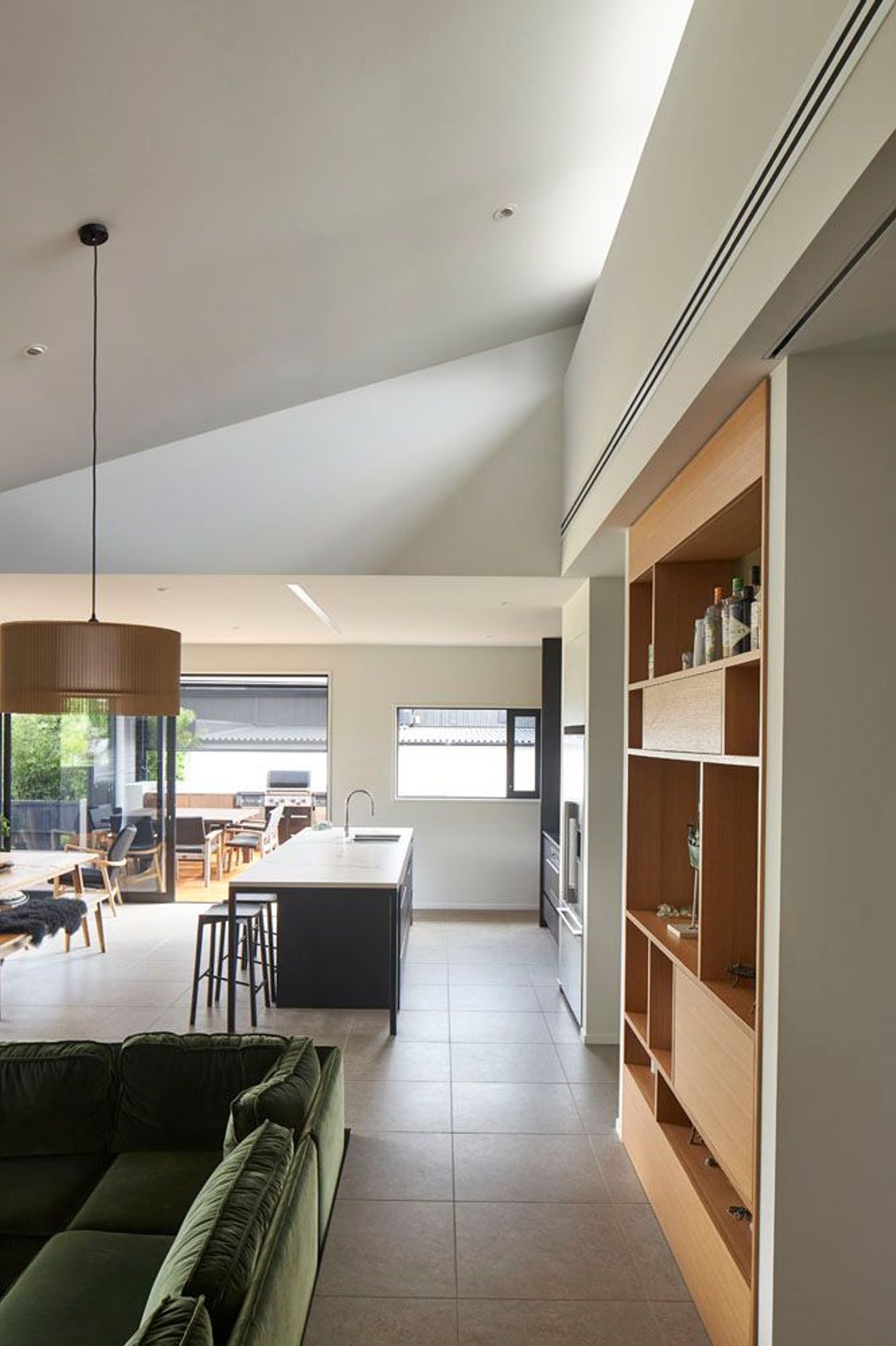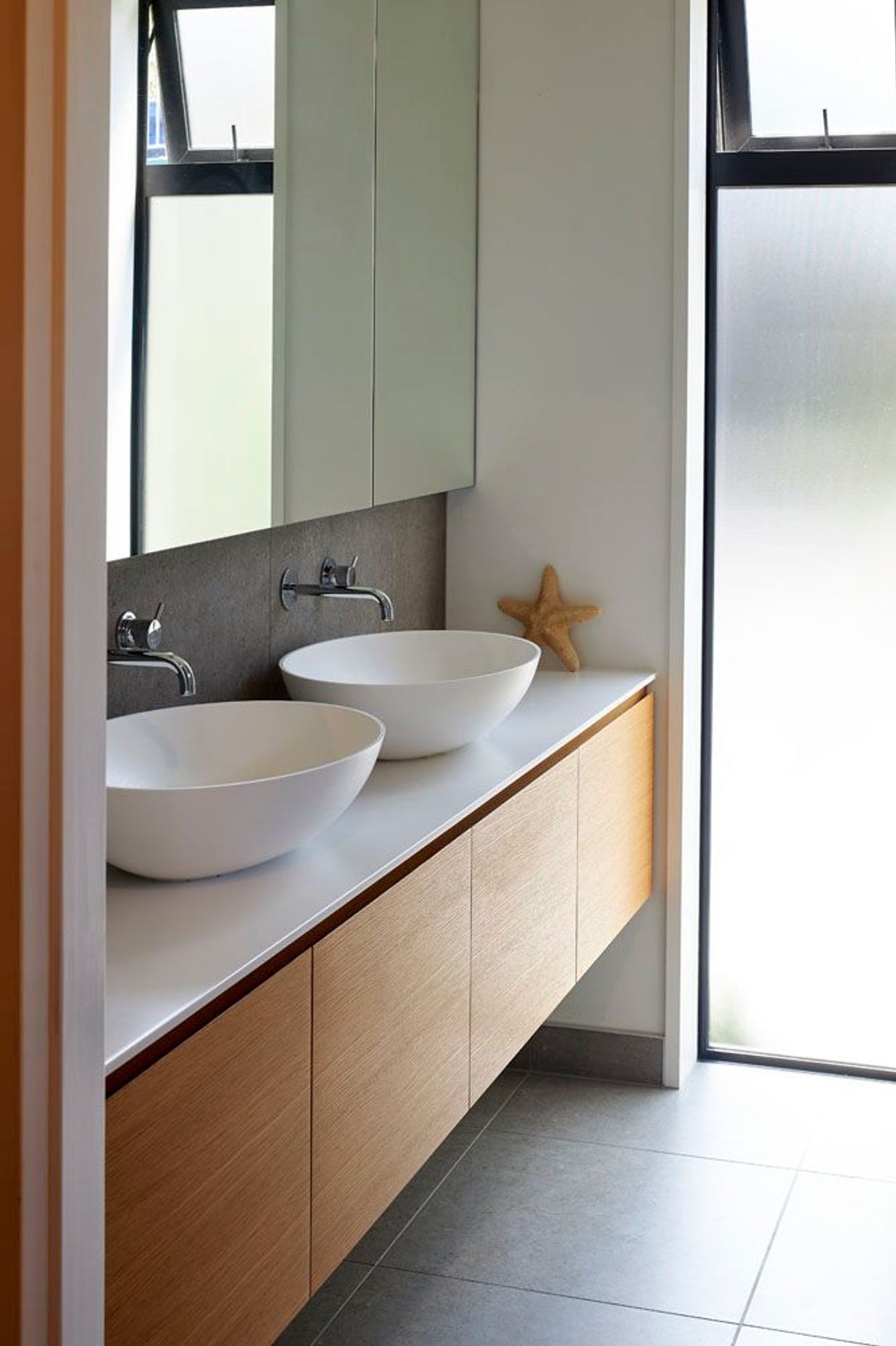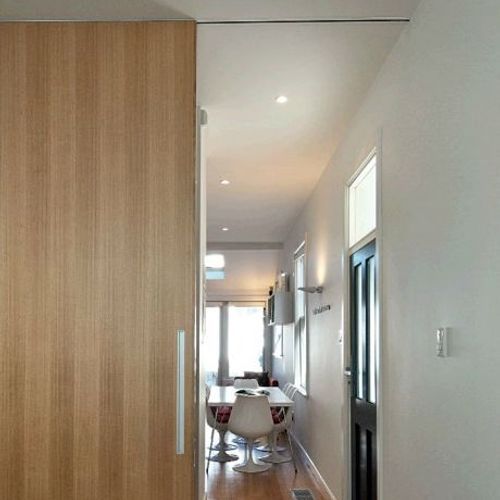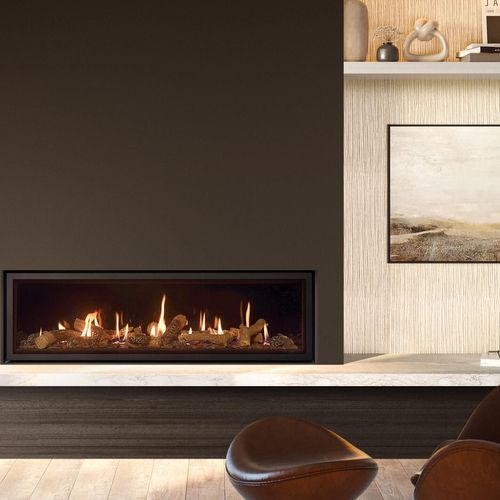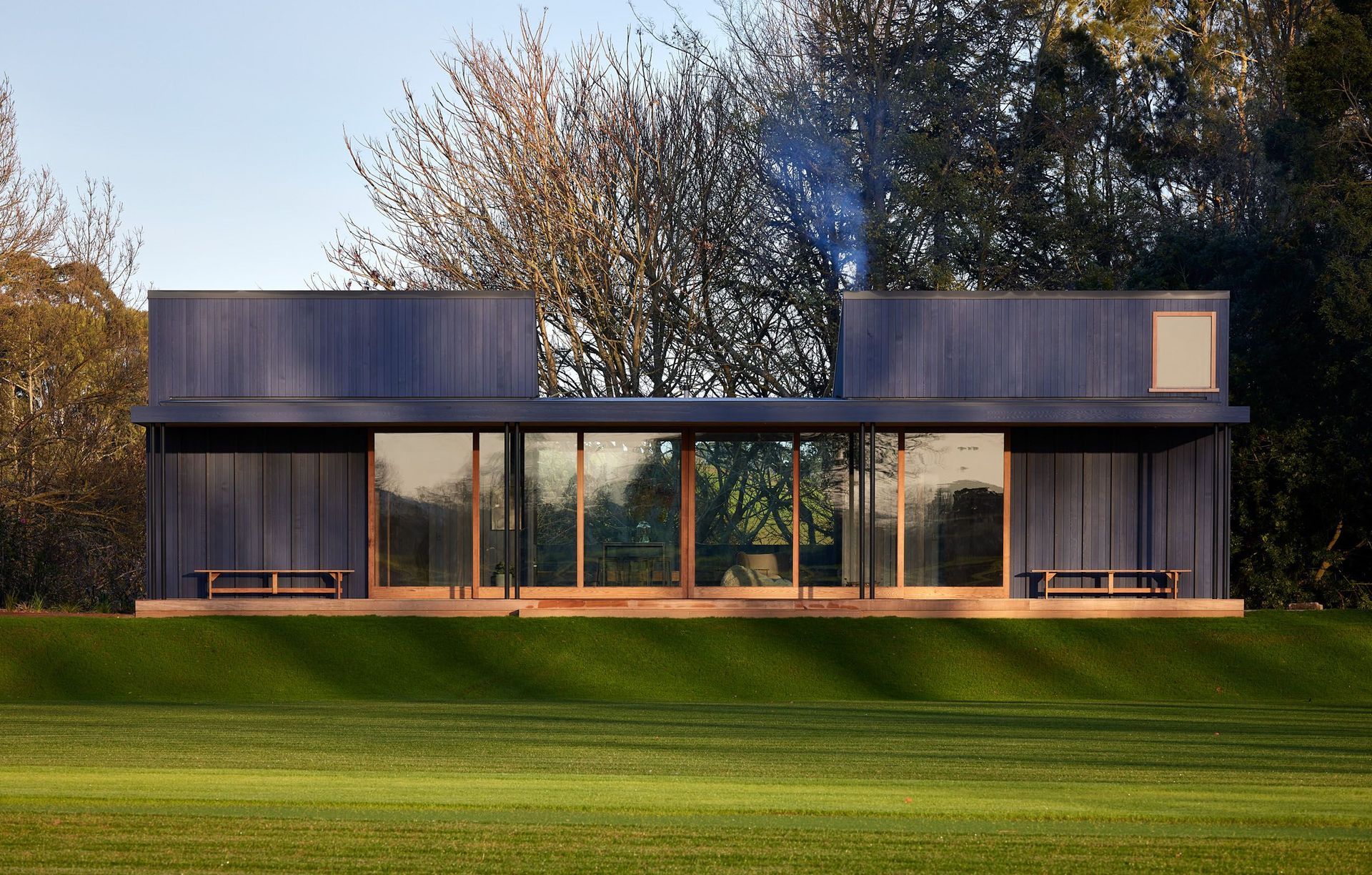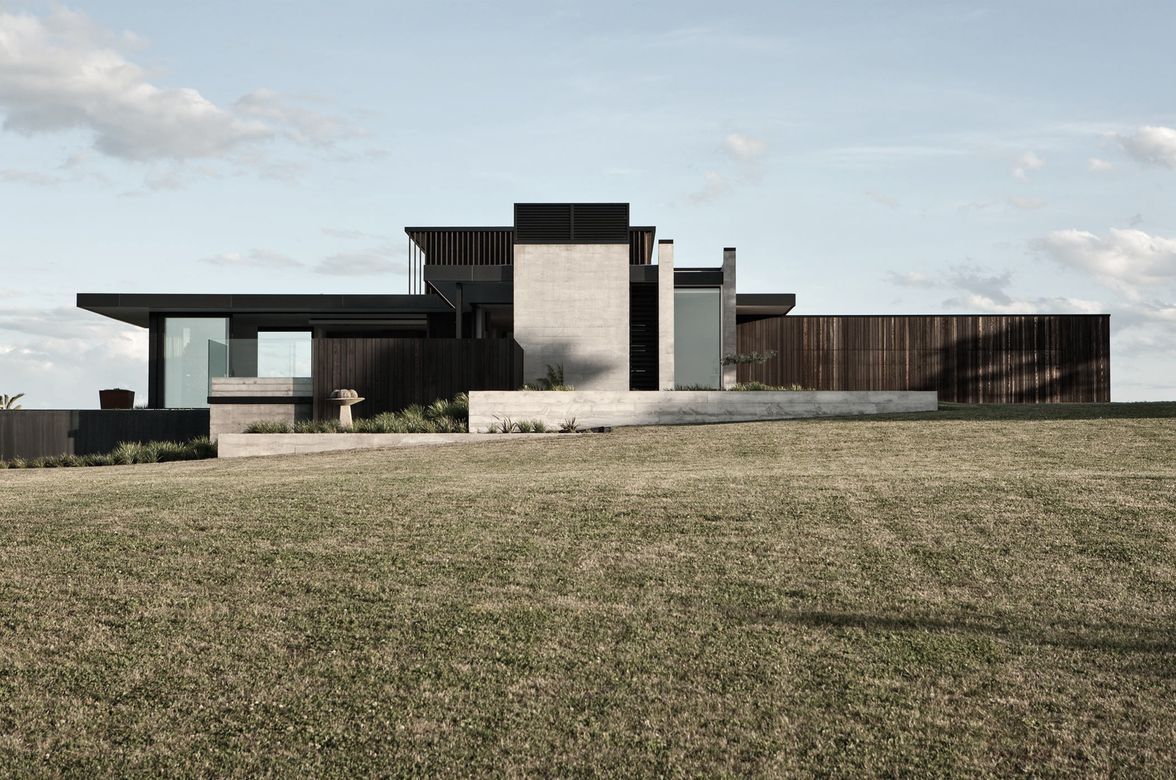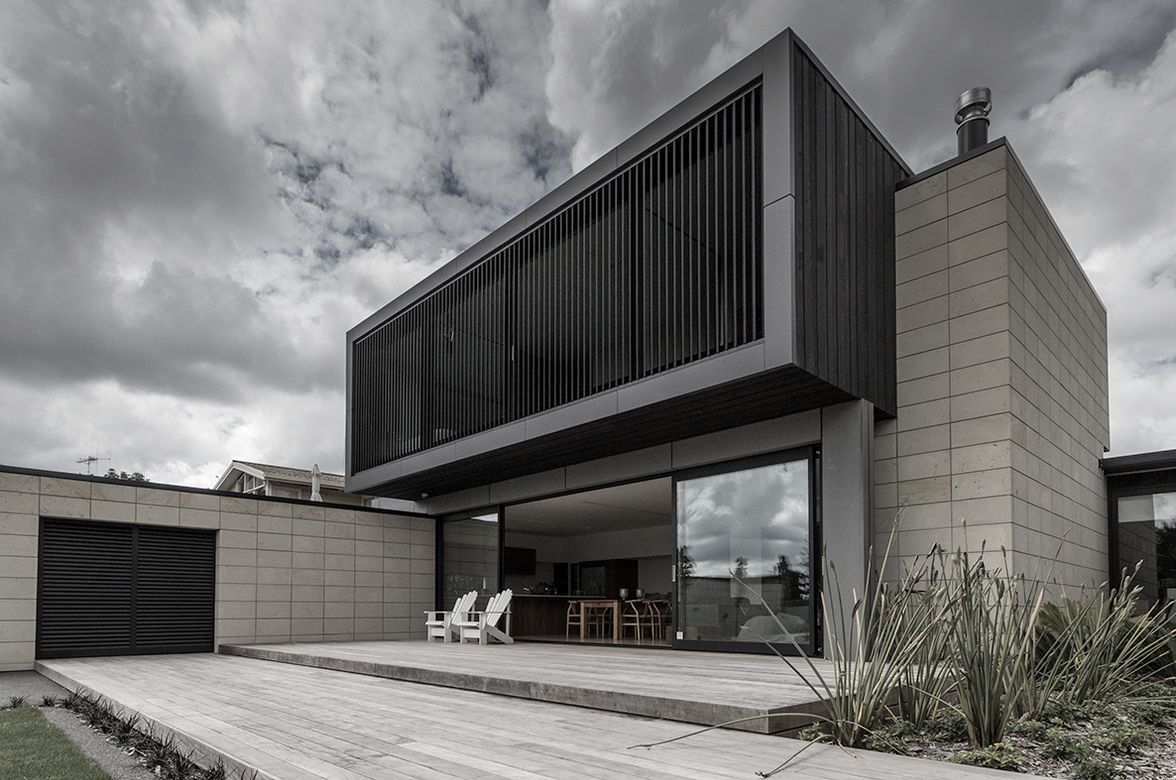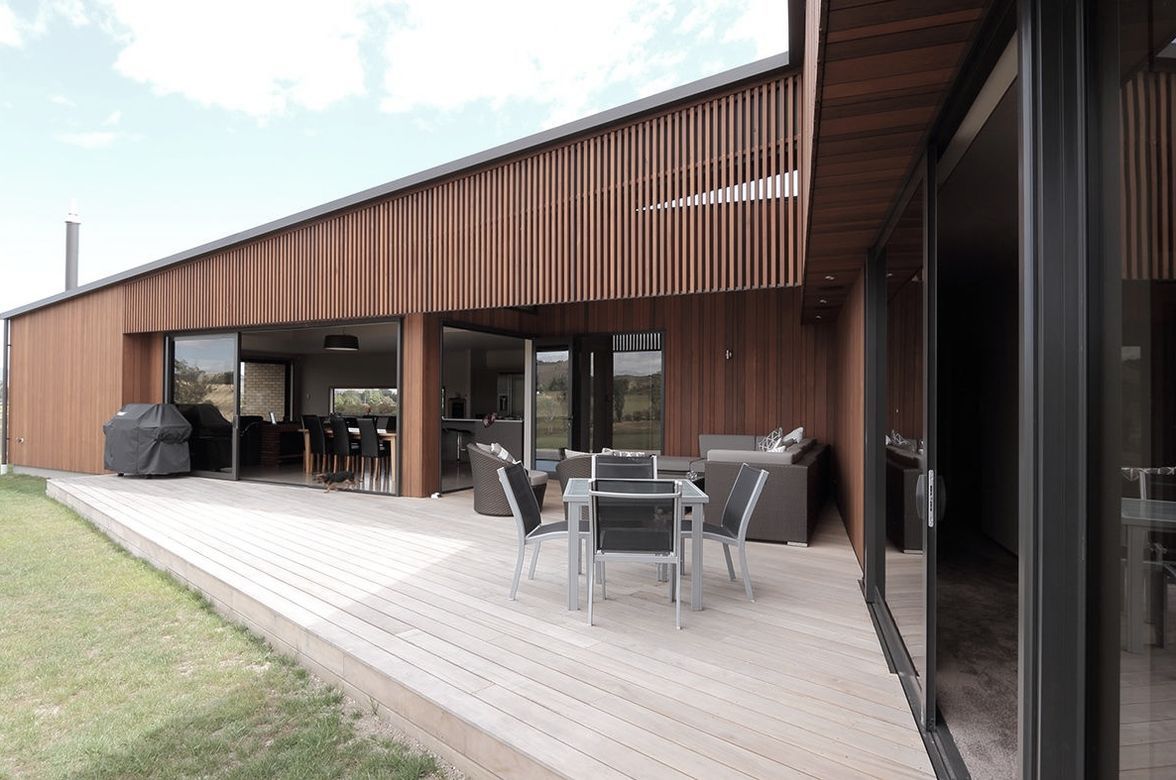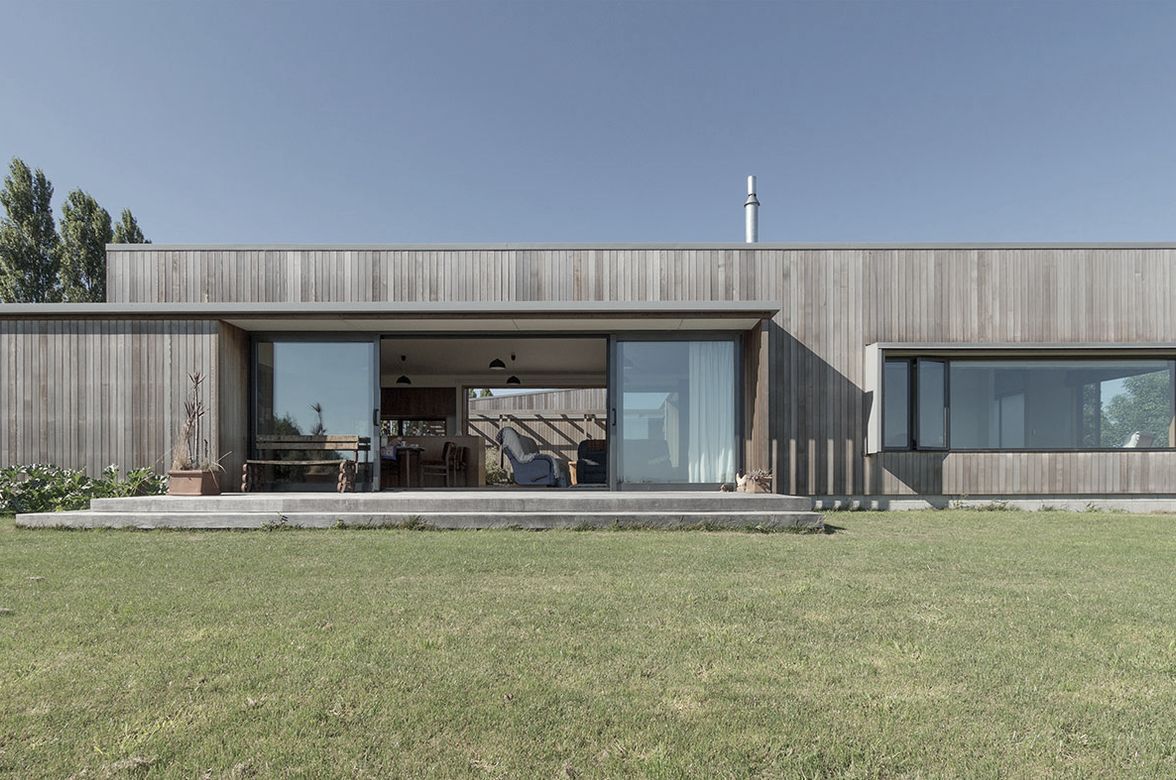Three Gables
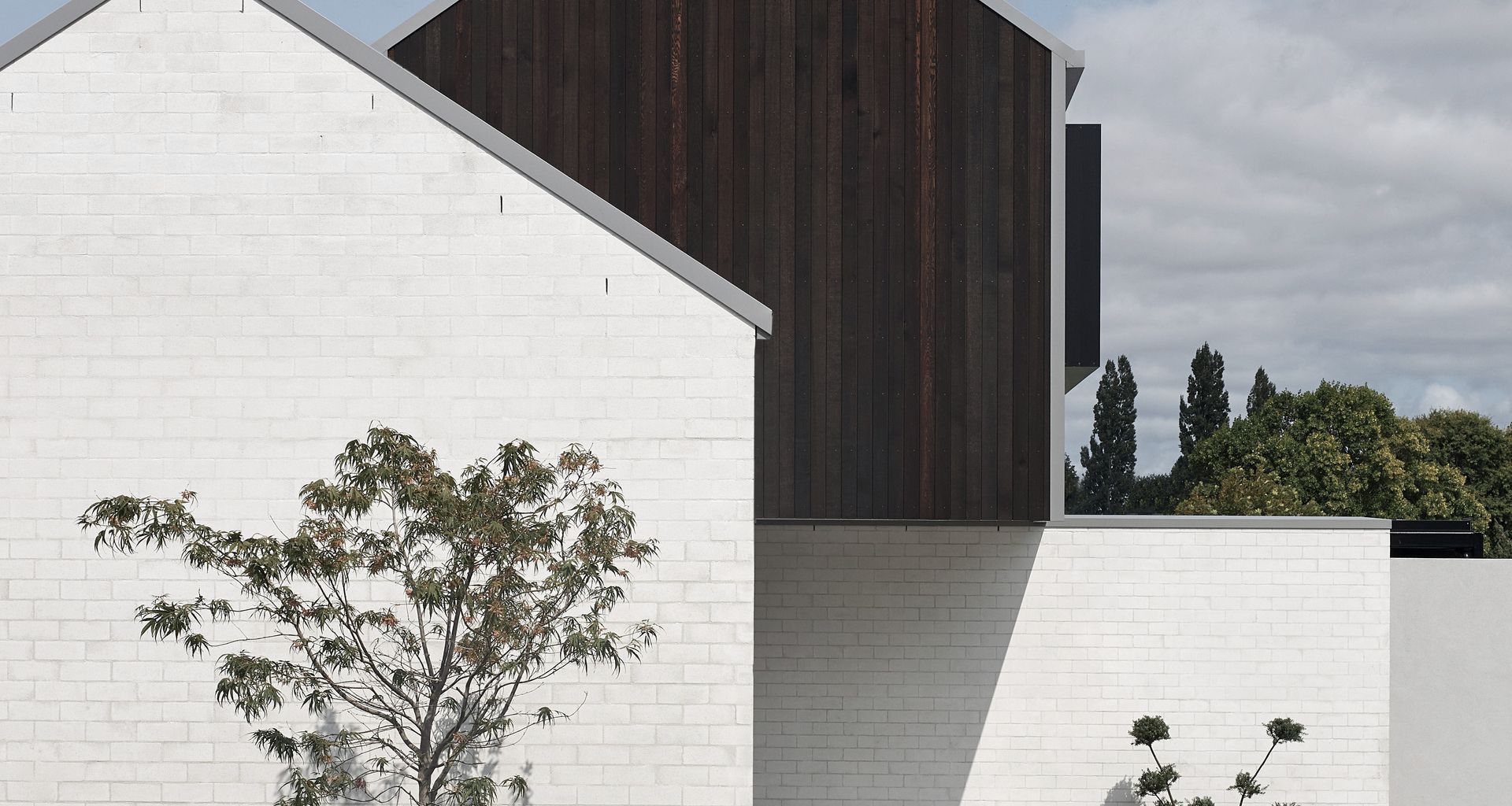
This family home is situated between a busy street and a popular park bordering the Waikato River. From the eastern road frontage, the site slopes down toward the western park adjoining boundary at the rear. On either side the building envelope is hemmed in and overlooked by the nearby neighbours. In response to the constrained building envelope and its lively context, careful site analysis and design has enabled the building to maintain important thresholds for privacy while generating an openness towards the view and neighbourly interaction with park users.
From the street very few signs of habitation are detectable. Three interlocking gables forms run longitudinally, rising toward the centre of the site. Thoughtfully placed walls provide privacy while serving as an acoustic barrier to reduce road noise. From the park the house reveals a different aspect to its character. Larger expanses of glass lead onto an elevated deck and a sheltered outdoor entertainment area and open the living spaces out towards the public green space. The ground floor level is raised to allow occupants to look over the boundary fence and take advantage of expansive park views while enjoying the notion of a protected position that elevation affords. Sliding external screens with adjustable louvres allow the house to respond to changing seasons and the need for varying levels of privacy.
No project details available for this project.
Request more information from this professional.
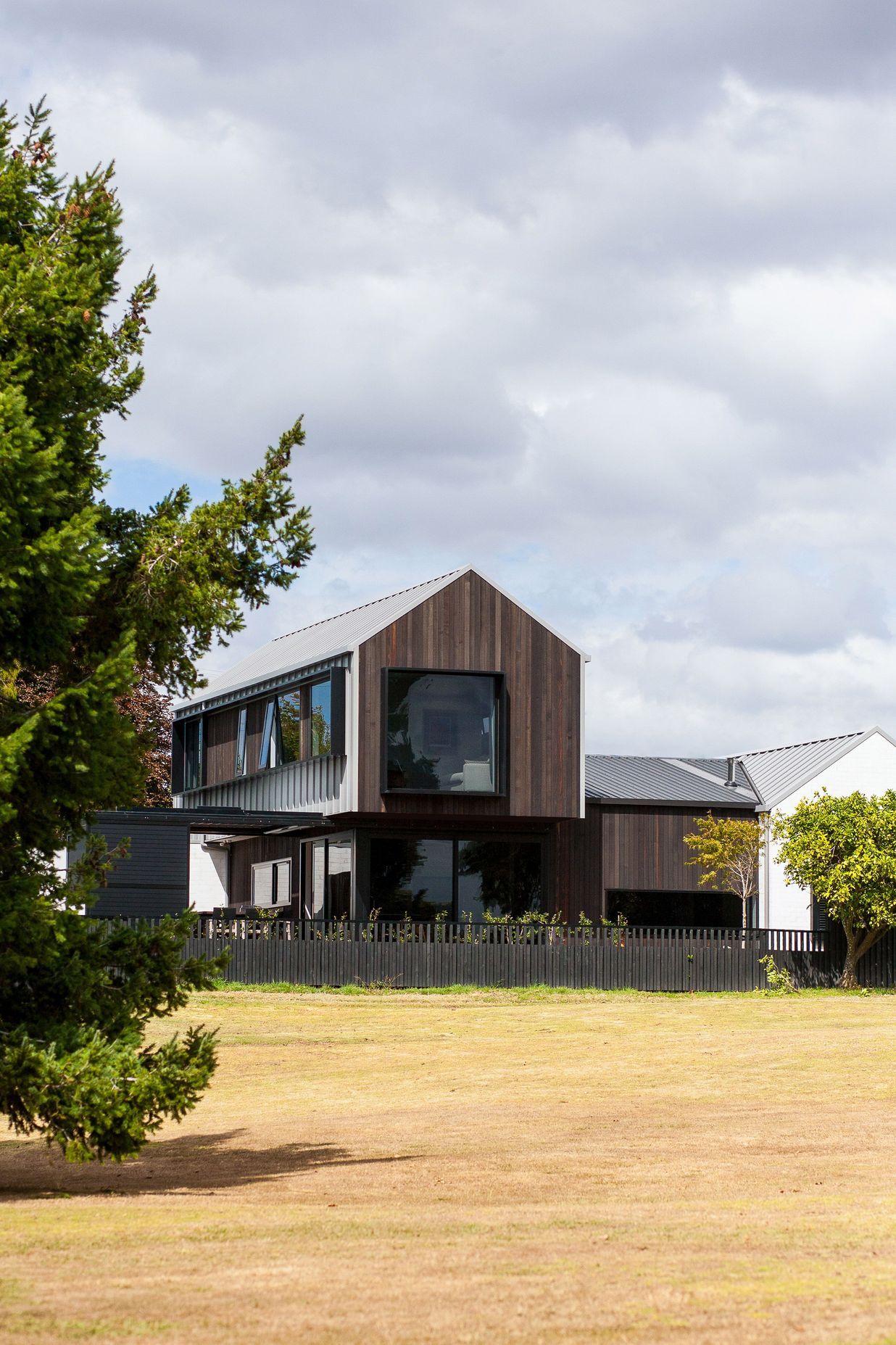
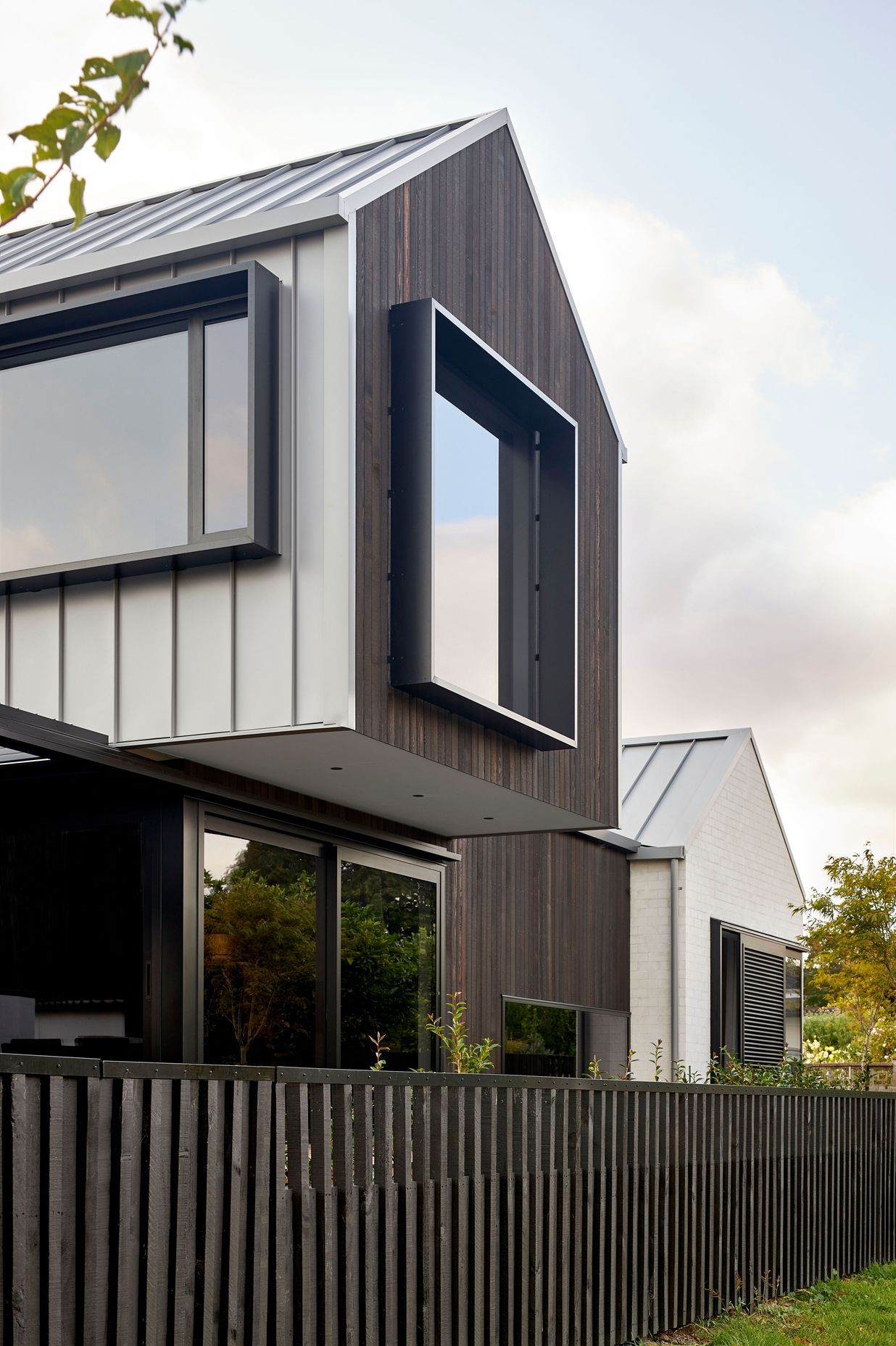
Products used in Three Gables
Professionals used in Three Gables
More projects by Edwards White Architects
About the
Professional
From urban spaces and workplaces, to private homes and holiday retreats, we believe good design should create an enriching experience that inspires individual and social well-being.
From our studios in the Waikato and Bay of Plenty we offer a comprehensive architectural service, extending from the macro level of master planning to the tactile experience of intimate interior spaces.
Each of our projects is an opportunity to bring together, people, capability and resource, in order to produce the highest outcome. Our design-led and pragmatic approach develops design responses that are thoughtful and beautiful yet grounded in a deep understanding of craftsmanship and technology.
Since Edwards White began in 2005 we have been designing with a deep respect of the environmental context. We believe that early integration of sustainability into conceptual thinking, leads to rich design outcomes that positively shape our environment and our culture. We’re also taking additional steps to improve the way our decisions and operations support a low carbon future, and are committed to the education and implementation of these practices.
- Year founded2005
- ArchiPro Member since2016
- Follow
- Locations
- More information
Why ArchiPro?
No more endless searching -
Everything you need, all in one place.Real projects, real experts -
Work with vetted architects, designers, and suppliers.Designed for New Zealand -
Projects, products, and professionals that meet local standards.From inspiration to reality -
Find your style and connect with the experts behind it.Start your Project
Start you project with a free account to unlock features designed to help you simplify your building project.
Learn MoreBecome a Pro
Showcase your business on ArchiPro and join industry leading brands showcasing their products and expertise.
Learn More